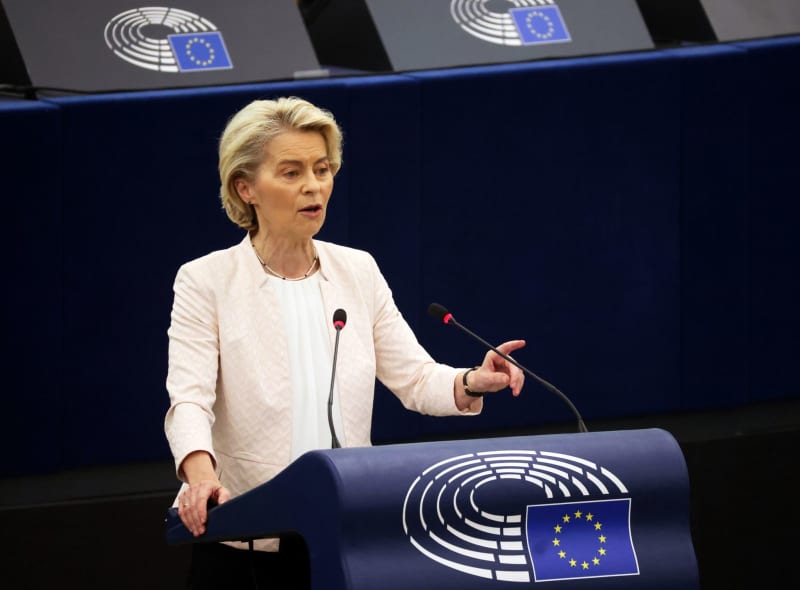The European Commission announced on Friday that the European Union is making 1.5 billion euros (1.6 billion dollars) available to finance Ukraine’s defense and reconstruction. The financing will come from the proceeds of Russian assets frozen in the EU.
“There is no better symbol or purpose for the Kremlin’s money than to make Ukraine and the whole of Europe safer places to live,” European Commission President Ursula von der Leyen wrote on X.
Most of the money – 90% of it – is used to reimburse EU countries for military aid they send to Ukraine, while the remaining 10% is paid directly to Ukraine as financial aid for reconstruction.
Kremlin spokesman Dmitry Peskov said that “such steps by the European Commission will not go unanswered.”
EU foreign ministers approved the payments in late June, with Germany and the Czech Republic among the first to be selected to use the proceeds to supply Ukraine with air defense equipment and artillery shells, diplomats said at the time.
EU foreign policy chief Josep Borrell said on X that “the EU will support Ukraine as long as necessary.” He noted that the €1.5 billion in aid will be used for “military capabilities and reconstruction.”
The support will be financed from the proceeds – such as interest – of the Russian Central Bank’s deposits in the EU, but not from the underlying deposits themselves, which will remain frozen.
“The immobilisation of the Russian Central Bank’s assets is a consequence of the sanctions imposed by the EU against Russia as a result of the war of aggression against Ukraine,” the commission said in a statement on Friday.
“The extraordinary income generated by EU operators in this context does not belong to Russia and is held by CSDs,” or central securities depositories. “The EU has now started channeling this income to Ukraine.”
The money was held by Brussels-based financial institution Euroclear until this week. On Tuesday, Euroclear made it available to the commission, which in turn released it on Friday for aid to Ukraine, the commission said.
The money is one of two sources of funding from outside the EU budget that the bloc wants to use to finance Ukraine’s defence. The EU budget itself cannot be spent on weapons of war.
The other source is the Ukraine Assistance Fund (UAF), a pot now worth more than €6 billion under the European Peace Facility (EPF), an off-budget military aid fund to which EU member states contribute.
However, each member state has a veto over the EPF and Hungary, which opposes arming Ukraine, blocks EPF payments despite the fact that it has allowed the creation of a special budget for Ukraine under the EPF.
A lot of legal work was also needed to overcome Hungarian opposition to the use of the proceeds from the frozen Russian assets.
The approval of the actual payments by foreign ministers in June followed an earlier agreement, in May, on the principle of using the proceeds to purchase arms for Ukraine.
A legal analysis found that because Hungary abstained on the May decision and the money does not come from the EU budget, Budapest’s veto did not apply to the June decision.
Gergely Gulyás, an adviser to Hungarian Prime Minister Viktor Orbán, accused Ukraine on Friday of “blackmailing” Hungary over its “pro-peace stance” by blocking oil shipments to the country, according to an X-post by Orbán government communications chief Zoltán Kovács.
According to the European Commission, around €210 billion of Russian Central Bank assets are frozen in the EU. Euroclear recently announced that the assets would generate around €4.4 billion in interest in 2023.

